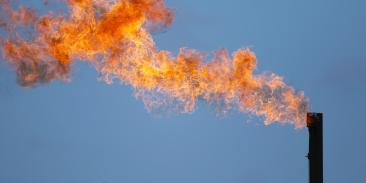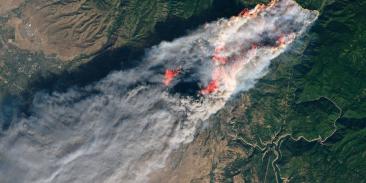G7 Kananaskis Wildfire Charter Boosts Global Cooperation on Wildfire
EDF encourages building on this ambition to transform business as usual approach to catastrophic wildfires
Globally, fire regimes are intensifying at an alarming rate, faster than humanity or natural ecosystems are capable of adapting to today. As a result, our current models for addressing fire are rapidly becoming ineffective. This is unsustainable and will result in ever-increasing greenhouse gas emissions along with growing threats to nature and communities.
Against this backdrop, Environmental Defense Fund applauds the G7’s Kananaskis Wildfire Charter announced yesterday in Calgary; we are actively advocating for a paradigm shift, which we believe is fundamental to successfully addressing the threat of catastrophic wildfires.
This statement of enhanced global cooperation and action to address changing fire regimes is essential. We note, however, the omission of references to climate change as a key driver of the wildfire crisis and encourage enhanced ambition for climate action.
EDF is encouraged to see particular attention given to strategic action areas such as:
Implementing mitigation and adaptation actions, grounded in scientific research and local knowledge, that reduce the risk of extreme wildfires, such as sustainable forest management, nature-based solutions, Indigenous land management practices including cultural or controlled burning, and adopting fire risk reduction measures around communities, buildings, and infrastructure.
Leveraging research, tools and technology that forecast, identify, and monitor wildfires, such as fire danger rating systems, geospatial technologies, and systems to provide early warnings when wildfire moves towards inhabited areas or infrastructure.
Encouraging research to better understand local conditions to support and scale-up ecological restoration, finding best methods for sustainable forest management to help prevent and mitigate wildfires, including in rapidly shifting conditions, and using community-based, whole of society approaches that incorporate local and, where opportunities exist, Indigenous practices, and increased participation by women.
Each represents points of leverage for how the global community could begin to advance a paradigm shift in how society addresses wildfire by harnessing scientific innovations to accelerate the speed and scale of wildfire management. In EDF’s view, such a paradigm shift is fundamental to successfully addressing the rapidly growing changes in global fire regimes.
Therefore, as current and prospective Kananaskis Wildfire Charter signatories and collaborators may advance efforts on the road to COP30 and beyond, Environmental Defense Fund encourages prioritization of strategies that – in addition to enabling “more action” – also facilitate a fundamental paradigm shift in global fire management approaches that can enable 10x-100x’ing today’s business as usual speed and scale of action. This will be required to successfully enable societies around the world to get out in front of escalating changes in fire regimes.
Examples of strategies and actions that can help foster this paradigm shift include:
- Clustering and tailoring relevant work under different action areas according to typologies of common forest biome types. For example, the nature of fire risks and appropriate responses will vary widely from boreal forest regions in e.g., Canada and Russia, dry forests of the e.g., western U.S., southern Europe, Australia and South Africa, and humid tropical forests of e.g., Amazon countries or Indonesia. Coordinated strategies, knowledge transfer agendas and technology development should be delineated on this basis, and, in addition to coordinated global action, could allow for harnessing further momentum and energy under existing regional cooperation platforms such as the Amazon Cooperation Treaty Organization or the Arctic Council.
- To speed and scale mitigation and adaptation actions, support economic analyses that shed light on full costs of wildfire events and costs of effective response across the five stages of integrated fire management: review and analysis, risk reduction, readiness, response to fires and recovery. Such analyses are often lacking or outdated and can be important inputs to supporting policy and budgetary adjustments to increase the pace of wildfire resilience actions. For example, Mexico has identified as an urgent priority the creation of a comprehensive National Integrated Wildfire Management Plan, along with corresponding subnational plans, to respond more effectively to the growing scale and severity of wildfires across its diverse ecosystems. Updated, robust and systematic economic, social and environmental impacts analyses could enable the country to develop more thorough and grounded plans that encompass actions far beyond firefighting operations, including activities to mitigate risks to infrastructure, livelihoods, public health, biodiversity, and water resources. This foundational work would also strengthen Mexico’s alignment with international best practices in integrated fire management and climate resilience.
- To speed and scale mitigation and adaption actions, engage Indigenous Peoples and local communities as partners in assessments of the existing policy and financing frameworks and explore to what extent current frameworks enable or disable enhanced leadership and roles in fire management. For example, in the United States, the Wildland Fire Mitigation and Management Commission included strong representation of Native American fire experts and a series of recommendations to expand cultural burning and tribal co-management of public lands.
- To speed and scale research, tools and technologies that forecast, identify and monitor wildfires, we encourage signatories to assess the potential to which an emerging satellite mission, FireSat, can serve emerging needs. FireSat, a developing satellite program led by the nonprofit Earth Fire Alliance, is designed to provide near real-time, high-precision data to spot and track wildfires faster and more accurately than ever. The Alliance aims to have the first satellites operational in 2026 and to operate over 50 satellites by 2030. Notably, the escalating costs of global wildfire resilience far exceed available budgets. As an example, the damage from the Los Angeles wildfires in 2025 is estimated at $250-$275 billion, exceeding the GDP of many nations. We encourage further dialogue amongst countries to identify low-hanging fruit for enhancing access to resources, such as dedicated earmarks under existing climate and disaster response funds. This can also extend to enabling eligibility for fire resilience activities, capacity building, and equipment provision under emerging forest climate finance instruments such as REDD+ results-based payments or the Tropical Forest Forever Facility. Additionally, we encourage further dialogue on innovative financing instruments that can crowd in new investment sources, as current levels of investment overall are insufficient to proactively tackle the growing threats of catastrophic wildfire.
As the Kananaskis Wildfire Charter action agenda is advanced, we encourage the establishment of ratcheting mechanisms to progressively increase action and ambition over time, as well as transparency and accountability mechanisms to demonstrate progress against this agenda that is so essential for societal health and wellbeing, climate change mitigation and adaptation, and the stability of natural systems.
We congratulate signatories for taking an important step forward to scaling action on wildfire through adopting this Charter, and reinforcing the recognition that the well-being of our planet and humanity will require an urgent paradigm shift. Environmental Defense Fund looks forward to continued progress and ambition on this essential agenda in the weeks and months ahead.
With more than 3 million members, Environmental Defense Fund creates transformational solutions to the most serious environmental problems. To do so, EDF links science, economics, law, and innovative private-sector partnerships to turn solutions into action. edf.org
Latest press releases
-
Trump Administration Announces Unlawful Offshore Wind Halt
December 22, 2025 -
Governor Hochul Repeals "100-Foot Rule," Accelerating New York's Clean Energy Future
December 19, 2025 -
Colorado Air Regulators Approve Landfill Methane Standards
December 18, 2025 -
Proposal Would Guarantee Public Access to Air Quality Data
December 18, 2025 -
New Bill Will Help Keep Domestic Manufacturers Competitive
December 17, 2025 -
Satellite Data Shows Colorado Oil & Gas Methane Emissions Dropped as State Rules Took Effect
December 17, 2025










